If you think people might buy your products or services without checking out the competition first, think again.
Research says that consumers, on average, visit three websites before making a purchase. Another insight by the same study is that the more sites a consumer visits, the more money they’re likely to spend. In other words, the more expensive the product, the more time people take to comparison shop.
More and more consumers are savvy enough to understand how to compare options, and they look at other places where they can buy the same or similar goods. Even if they want to buy stuff in retail outlets, 83% of U.S. consumers go online to research electronics, computers, books, music, and movies before buying those items in brick-and-mortar stores.
The product category matters. When it comes to people shopping for smart phones for instance, 72% of shoppers considered 2+ cell phone models, and 57% visited 5+ different brand sites before purchasing (either OEM, retailer, or carrier). They also took their time researching, with 60% of online shoppers starting their research at least two weeks prior to purchase.
A study by the e-tailing group concluded that consumers are invested in finding the lowest price:
- 94% of online shoppers invest time to find the lowest price for commodity products.
- 36% spend 30+ minutes comparison shopping before making a decision on purchasing a commodity product; 65% spend 16+ minutes doing so.
- 51% visit 4+ sites before finalizing a purchase.
- The ability to Google price comparisons or check Amazon’s prices (or visit a few competitors) is core to consumer shopping behavior.
- The total cost, including shipping and handling, and product price are the two most important influencers for online purchase decisions.
- 58% expect all retailers of commodity products to incorporate a kind of on-site comparative pricing tool into their shopping experience.
Table of contents
- People want better product information.
- Compare yourself with the competition before they do.
- Service 1 vs. Service 2
- Apples to apples or apples to oranges?
- Should you show competitor prices on your site?
- Listen in on social media.
- If there’s no difference, people will choose based on the price.
- Reduce barriers to first purchase; make it smooth for future purchases.
- Conclusion
People want better product information.
A study by Oracle revealed that people want, above all, more detailed and visual product information (37%), better search (29%), and easier access to a customer service representative via live help options such as click-to-call or live chat (20%).
Newegg competes in a difficult market. Their advantage over competitors is that they don’t rely solely on manufacturer product information but, instead, write their own sales copy for each product.
Providing better product information is how they manage to stay in business while competing with giants like Amazon, Walmart, and Best Buy.
Do this: Gain advantage over your competition with better, more thorough product information.
Compare yourself with the competition before they do.
Fact #1: People do their homework before purchasing a product or service.
Fact #2: People are lazy.
Solution? Compare yourself with the competition before they do.
When comparing options, people usually look only at the most obvious things, like price and key features. For example, when choosing a web host, they look at the server space and monthly fee—that’s it. As an expert in your field, you know that many other things should be considered, and perhaps your advantages are less noticeable at first.
To combat this, compare your offering to the competition on your website, so you can point out the biggest advantages over alternatives. If your product is more expensive, this is your chance to explain why. If some of the specs are lower compared to the competition, point out that your support is way better. Or you provide personal consulting. Or it’s more green. Whatever.
This is how InMotion Hosting does it:


But won’t the customer find out about my competitors? If you think they don’t already know them, you’re naive. So let’s say you keep on being naive and don’t include the comparison on your site. Then what?
They go to your competitor’s website anyway. Now imagine if your competitor is openly comparing your services—and making it look like their offer is superior. What will happen? Many people will take that competing offer.
Having a comparison table can keep people from leaving your website. They can already do the comparison on your site, so why leave? It won’t keep all of them on your site, but you’ll definitely win over a good portion of visitors.
Service 1 vs. Service 2
This is a common way to compare services—people just Google it. Bluehost vs Hostmonster. Ducksboard vs Geckoboard. You get the point.
If you’re smart like Mixpanel, you plan for it and create dedicated pages for these comparisons.
If you google “mixpanel vs amplitude,” this is what you’ll see:

That’s right. The second result in Google is a page created by Mixpanel. It looks like this:
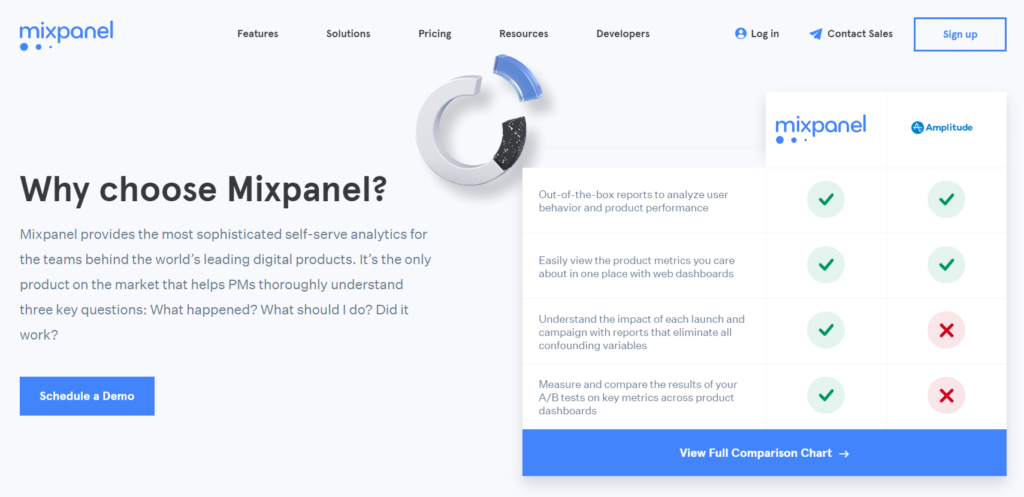
Do this: Figure out which competitors your customers compare you against most often (type “[your service] vs ” and seeing what Google offers) or which competitors you want to be compared to, then create a dedicated page for those comparisons.
Approach those pages like landing pages for a specific customer persona (i.e. comparison shopper). Make sure the on-site SEO rocks, and you should be good to go.
Apples to apples or apples to oranges?
There are two schools of thought. One says that since customers comparison shop, you should make it easy for them to compare. So you structure your product or pricing page in a similar fashion to the competition.
Another school of thought is that you should intentionally make it difficult to compare, so they’d spend more time looking into your product.
Here’s an example. Compare these two competing products and tell me which one is cheaper (you have five seconds!):
It’s pretty difficult to figure it out, and here’s why:
- Their pricing plans don’t match—they compare a different number of monthly visitors.
- The last example shows 10% off prices by default (which you get only if you pay for a year upfront).
So what will the user do?
- Take out a calculator and calculate the cost per 1,000 visitors; or
- Pay more attention to things besides pricing.
Do this: Create a page with easy-to-compare plans and a page with difficult-to-compare plans. Test them. (Of course, the results will depend not just on the competition but myriad factors.)
Should you show competitor prices on your site?
Since everybody always wants to know the prices, perhaps you should—especially if you sell commodities. For things people buy all the time (e.g., batteries, beer, jeans), they already have a pretty good idea of what’s a good deal. But not always. And not for things people buy online.
A study exploring why consumers leave websites before buying found that the second most common reason for leaving the site before buying was, “I was not sure that the site provides the best price.”
This means that you’re more likely to get the sale if you instill confidence in prospects about your price.
You can experiment with:
- “Best price guarantee” types of promises;
- Drumming up the value of your product;
- Using urgency;
- Emphasizing the extra value they get if they buy from you (and not the competition);
- Free bonuses/gifts to go with the purchases;
- Showing how much your competitors charge (if you’re competing on price).
Scan Cafe features prices of their competitors on their site:
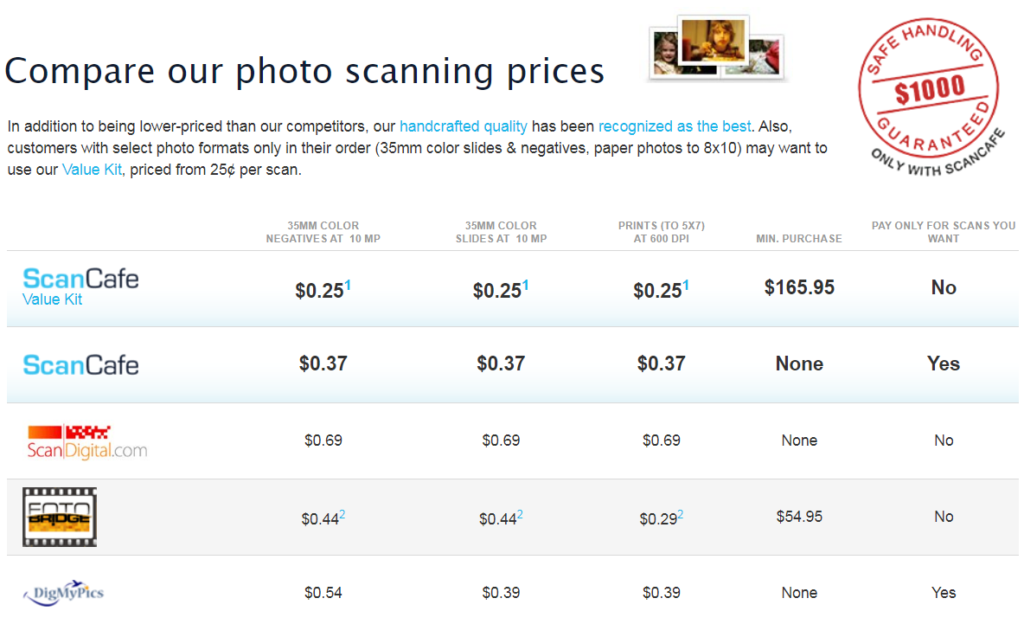
Furthermore, shoppers positively perceive a retailer who shows competitor prices on their website—convenience, complete information, and time savings are important to their online experience.
Some 78% are likely to return to a retailer who shows competitor prices, and 53% no longer feel compelled to comparison shop elsewhere if a merchant features competitor prices.
People even check competitor prices even offline. About one-third of in-store consumers compare prices on mobile devices. Another study backs this up and says it’s mostly iPhone users who do so.
Listen in on social media.
Another common way people comparison shop is by asking around on social media. What’s the best software for X? Is there anything better than Y? Has anyone used Z? People posing these questions seek validation and insight from their peers.
According to a study, 47% of respondents look to other social media users when considering a home furnishings purchase, and 25% seek advice on social networking sites when contemplating an apparel purchase. Nearly one-third of social media users say they’ve recommended a product or company to a friend through a social networking site.
This is a great opportunity for you. Monitor relevant keywords on social media platforms like Twitter, Facebook and LinkedIn, or monitor related topics on sites like Focus or Quora to find people looking for what you sell. Once you find them, make a case for your product (or just inform them).
When I used to work on Traindom, we did that all the time and stole lots of customers from people unhappy with our key competitors. Most weren’t even aware that we existed, so it was a great way to market our product.
Entrepreneur has a story of how someone looking for an iPad case sent out a tweet:
As it happened, there were. Matt Winslow, co-founder of Dodo competitor Beacon Cases in Raleigh, N.C., fired back a suggestion to check out his product. In a subsequent e-mail, he discussed pros and cons of various cases and particulars of Beacon’s unique “tab and gate design.”
What’s the main motivation for people seeking online opinions?
So have somebody in your team monitor social media real-time to add your product to potential buyers’ comparison. Here’s a list of free social media monitoring tools.
A study looked into it and found these reasons:
- Reduce the risk of a bad purchase they’ll regret;
- Find the cheapest price;
- Takes too much time to research;
- To appear cool and build relationships with peers.
Knowing this will help you plan your angle when you approach people on social media.
If there’s no difference, people will choose based on the price.
Remember: If your product isn’t unique, you’ll always compete on price. If the products are the same, why pay more? That can work to your advantage.
The most proven pricing strategy in a competitive market is doing it cheaper than others. People like to get stuff cheap. This is often the best strategy to choose if your product is very similar to others in the market.
Do this:
- If you sell commodities, see if you can offer the best price on a regular basis.
- If you can’t win price wars (most small businesses can’t), focus on the extra value you add in your offer (e.g., store warranty, free shipping, free installation, bonus gifts, etc.).
Reduce barriers to first purchase; make it smooth for future purchases.
If your business model relies on regular repeat purchases by the same customer (i.e. you’re not selling real estate or pianos), you must do two things.
1. Incentivize first purchases.
The hardest thing in ecommerce is winning over people who’ve never bought from you. They’re unsure about your trustworthiness, the level of service, and unexpected hassles.
You have a significant disadvantage compared to stores at which they’ve shopped before. To overcome this, compensate buyers with extra incentives. You can do it by:
- Offering free shipping (at least for first-time buyers);
- Giving a coupon to first-time buyers;
- Beefing up credibility;
- Minimizing anxiety and pain by asking for as few details (i.e. minimal number of form fields) as possible when buying;
- Reducing friction with an on-page FAQ to address common fears and doubts;
- Ensuring product copy leaves no question unanswered (as 50% of purchases are not completed due to insufficient information);
- Not forcing them to sign up. (You can create an account for them automatically based on their email address and an autogenerated password.)
2. Make repeat purchases convenient.
I personally buy more stuff from Amazon than anywhere else. Besides them having my full trust, the best selection (in most cases), lots of reviews, and good prices—it’s about convenience.
My credit card (three of them, in fact) is stored there, and buying stuff that I need is easy. I don’t have to type anything.
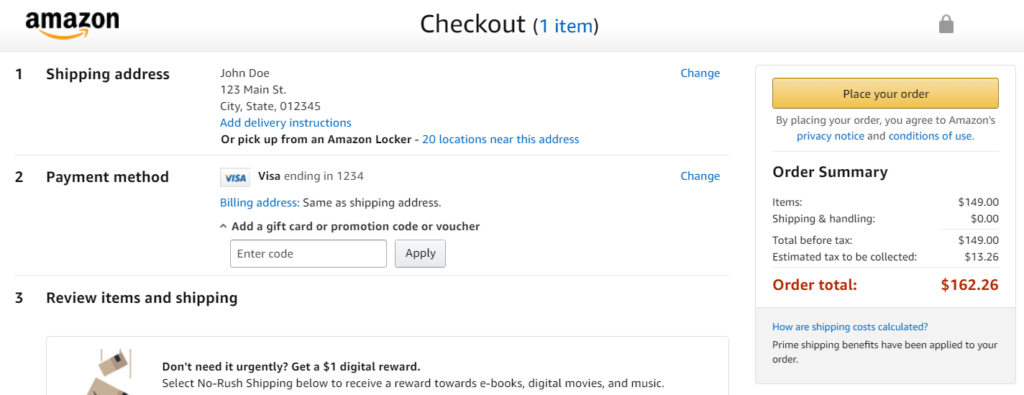
Here’s how you can make repeat purchases convenient:
- Keep people logged in so they don’t have to log in each time;
- Use persistent shopping carts (i.e. contents of shopping cart never expire, or not before 60 days);
- Store shipping and billing information.
Conclusion
So what’s a marketer to do?
- Acknowledge that people compare options and plan accordingly.
- State your case as well as possible and provide adequate product information.
- Have comparison tools on your site.
- Make sure that comparison research shows off your advantages and why they should buy from you.

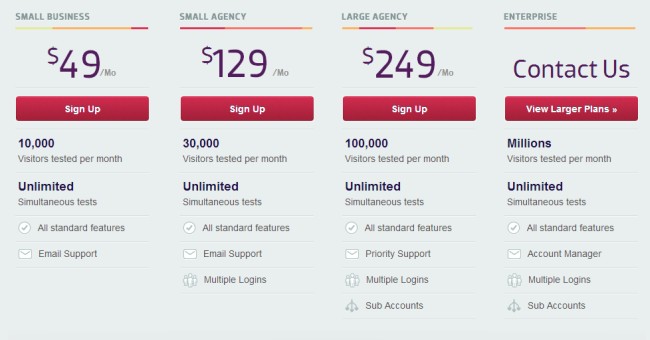
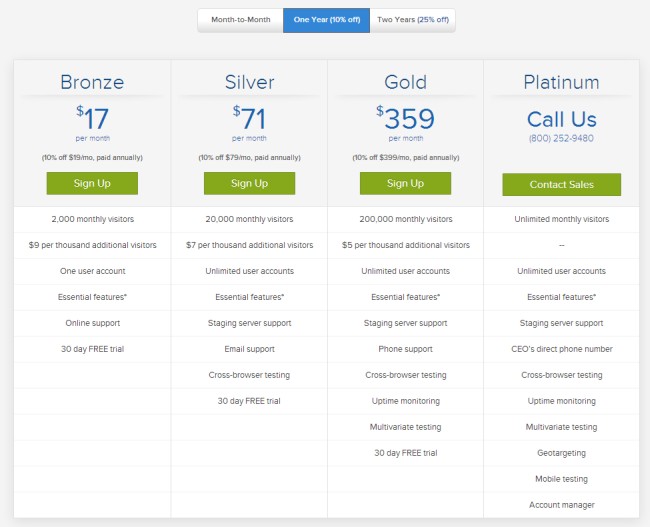

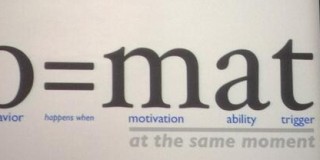
Great article Peep, a very comprehensive assessment of the ‘journey’ consumers now take when purchasing online. The typical conversion funnel is almost obsolete as people exit and return to the funnel at will.
Thanks Matt! I think you’re right. The funnel does still work in some occasions (single, unique product, pre-existing relationship etc), but is much less common than it was a few years ago.
Wow. This is an awesome post.
“The typical conversion funnel is almost obsolete as people exit and return to the funnel at will.” – Matt
“The funnel does still work in some occasions (single, unique product, pre-existing relationship etc), but is much less common than it was a few years ago.” – Pepe
This an excellent observation. I often found myself coming back to buy from a particular seller days or even weeks after first landing on their page or after entering the email campaign. Going in and out of the funnel is certainly more common today. Any other recommendations on strategy when developing a funnel that has less “leakage” so to speak.
And do marketers who provide services such as conversion or content marketing consulting need to worry about the comparisons as much as commodity product sellers.? My guess is no.
Thanks Martin.
Everyone needs to worry about comparisons. Yes it’s easier if your product / service is unique, but there are always alternatives to what you offer – and you need to build your case why anyone should buy from you and not the competition.
“you need to build your case why anyone should buy from you and not the competition.”
A value proposition essentially. Solid advice.
I learned that from your blog post here https://cxl.com/value-proposition-examples-how-to-create/ and from Dr. Flint McGlaughlin over at meclabs.
Thanks again.
Wow. This is really good stuff. I am going to implement all your excellent recommendations on both my websites. Keep your golden nuggets coming please!!
Thanks. Let me know how it plays out.
Overall, an excellent look at customer actions. I am definitely going to start creating articles with competitor comparisons. Again, you have created a real resource. Thank You.
Thanks Joe!
Another great post Peep. I was only look at the pricing pages for Otimizely and VWO just the other day and thinking along the same lines. It’s impossible to compare them on price which I guess is the point.
I’m working with a new client at the minute in the online training space and there’s very little to differentiate between other providers apart from price. Thanks for the article, it’s made me think about the right things just at the right time.
Yeah, I’m wondering whether it’s a sort of a cartel agreement :)
Great article as usual ;)
Appreciate it Jericho!
Thanks Peep loved this post! Great section on “Should you show competitor’s prices on your site?”
Thanks Nick
Great stuff as always, straight to the point.
Whitch one is better: 105 with free shipping or 99 + 6 for shipping?
A quick look would suggest 99 as cheaper but as it would turn out sooner or later for the buyer, it’s not. Then again, 105 could be immmediatly dismissed in a site-hopping comparison, if the free shipping is’t very clear.
Definitely – and this is why comparison tables are important on your website – you can choose which information you show and how.
Thanks for this very comprehensive blog post Peep. I am wondering how this compares to a professional service product (i.e. service) which is typically sold on perceived value rather than price.
Service products have always alternatives – other companies offering similar or identical services. So differentiation and unique value proposition are critical to get the prospect to choose you.
Great article! I’m forwarding to my staff to consider modifications to our website as well as to my fellow business associates to help in theirs! Thanks, Peep!
Thanks Susan
Excellent post Peep, now it’s posts like this that make me thankful that I found your blog..which was by fluke really. Love it…excellent info.